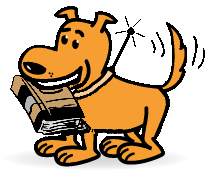By Stephanie Samek
If you dream about having an income-producing bookstore without the massive overhead of a bricks- and-mortar business, then online selling is definitely the way to go. For the beginner, an Amazon bookshop offers the easiest way to get your store started in a highly visible marketplace filled with millions of shoppers. But in order to sell there, it’s important to know how to co-exist with Amazon’s TOS (terms- of-service) while keeping your customers happy. At our bookstore in Michigan, we’ve spent six years learning how to grow an online business with Amazon. Read on for our suggestions on how to assemble and run your own bookstore professionally.
It begins with 2nd hand books, of course, something you might know a little about. If not, don’t worry; there are devices which will help with your education. If you don’t already have a stash of books set aside, you need to start gathering your stock. One of the best ways to accomplish this task is to sign up with a book-scouting service. The most inexpensive and versatile service we’ve found is at Scoutpal.com. Scoutpal allows you to look up the value of books with an internet-enabled cell phone or PDA during your book hunting. Simply type in the ISBN number (if available) to have the software present you with the lowest used prices of that book, based on condition, plus the Amazon price and the sales rank. This information is important to have while searching for salable books. You can also invest in a scanning device to hook up to a cell phone, to increase the speed of your hunting.
versatile service we’ve found is at Scoutpal.com. Scoutpal allows you to look up the value of books with an internet-enabled cell phone or PDA during your book hunting. Simply type in the ISBN number (if available) to have the software present you with the lowest used prices of that book, based on condition, plus the Amazon price and the sales rank. This information is important to have while searching for salable books. You can also invest in a scanning device to hook up to a cell phone, to increase the speed of your hunting.
Of course you won’t be scanning or inputting every book you see. Not only will that slow you down, but you might attract unwanted attention in certain locations. Here is a general rule-of-thumb guide to help you along.
The Bad: Anything with outdated information or an expired fad topic needs to be dodged in nonfiction. Old computer books, old political books, old fitness books, old self-help books, old reference books, old textbooks and the like. Stay away from most mass market paperbacks and hard covers in fiction, any reader’s digest or book club books, advance reading copies and encyclopedias. Books must also be in good condition to sell, so no missing pages or strong odors. Mildew or water damage is not allowed.
The Good: Out-of-print or in-print titles that still have an audience or an interest factor, and haven’t flooded the market with millions of 2nd hand books. Unusual, specialized or hot topics like whittling wood, racing cars, or organic gardening, for example, might fly. Brand-new popular bestseller fiction or non-fiction may be salable, but usually only briefly. Some sellers specialize, or develop a ‘niche’, for example, in children’s books and non-fiction topics like technical manuals. There is no need to specialize if you don’t want to, but be aware you’ll have to study more items until you develop a nose for what sells.
Here are some examples of titles that sold well for us recently:
